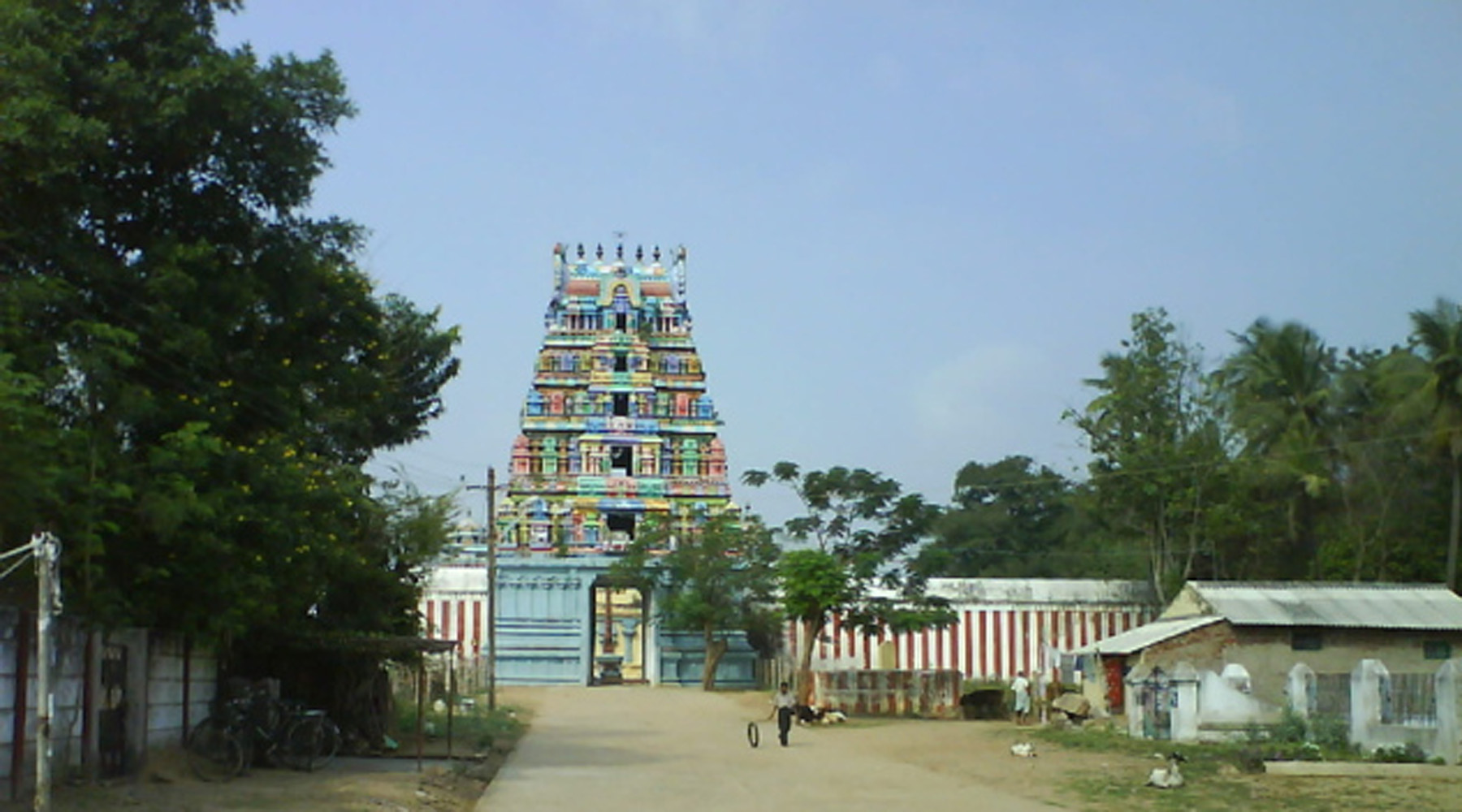Aavoor Sri Pasupatheeswarar Temple, Thanjavur

Address
Aavoor Sri Pasupatheeswarar Temple, Aavoor Post Valangaimaan Taluk, Tanjure District, Tamil Nadu – 612 701. Tele: +91 – 94863 03484.
Deity
Pasupatheeswarar Amman: Mangalambikai
Introduction
Pasupatheeswarar Temple, Avoor dedicated to Shiva, located in the village Avoor. The temple is one of the 70 madakoil built by 2nd century Chola king, Kochengat Chola. The temple is known for the Panchabairavar, the five images of Bhairavar. The temple is revered in the verses of Tevaram, the 7th century Tamil Saiva canon by Tirugnana Sambandar.This is one of the 276 Devara Paadal Petra Shiva Sthalams and 21st Shiva Sthalam on the Southern bank of the river Cauveri in Chozha Nadu (Thenkarai). Lord Shiva in this temple is a Swayambumurthi (self-manifested). This temple is called “Then Kayilayam” and it is considered to be as auspicious as Mount Kailash. Theertham (Holy water): Brahma Theertham, Kamadhenu Theertham, Chandra Theertham, Agni Theertham Sthala Vriksham (Sacred Tree): Arasu (peepal tree)
Puranic Significance
The village Aavoor is home to the ancient Pasupatheeswaram Temple, dedicated to Lord Shiva. This sacred site is deeply intertwined with Hindu mythology, with legends of divine beings, celestial events, and miraculous healings associated with it.
Adhiseshan and Vayu’s Battle – The Origin of the Sacred Rocks
According to Hindu mythology, Adhiseshan (the divine serpent on whom Lord Vishnu rests) and Vayu (the Wind God) often quarreled to prove their superiority.
- During one such mighty battle, Vayu unleashed fierce winds, and Adhiseshan lost his grip on Mount Meru.
- Due to this impact, two rocks from Mount Meru were dislodged and fell to the earth—one at Aavoor and the other at Nalloor, a nearby village.
- This event marks the sacredness of Aavoor, making it a spiritually significant place.
Chola Rule and Historical Names
- During the 2nd century, Aavoor was under the reign of the Chola kings, and this temple is believed to have served as their fort.
- The historical names of this place include “Manikoodam” and “Asvatha Vanam”, indicating its ancient cultural and spiritual importance.
Kamadenu’s Worship and the Name “Pasupatheeswaram”
- Kamadenu, the divine celestial cow, was once cursed by Sage Vashistar.
- Following Lord Brahma’s advice, she came to Aavoor and worshipped Lord Shiva to seek relief from the curse.
- The name “Aavoor” originates from “Aa” (cow) and “Oor” (village), symbolizing its connection to Kamadenu.
- Kamadenu’s first landing place on earth was in a nearby village called Govindakudi.
- The name “Govindakudi” is derived from “Go vantha kudi” (“Go” = cow, “vantha” = came, “kudi” = village).
- Since Kamadenu worshipped Lord Shiva here, the temple is named “Pasupatheeswaram”:
- “Pasu” means cow
- “Eswaram” refers to Lord Shiva
King Darmadhwaja’s Healing
- A king named Darmadhwaja was afflicted with leprosy.
- He visited this temple, took a holy dip in the Brahma Theertham (the temple’s sacred water), and prayed to Lord Shiva.
- Miraculously, he was cured of his disease, reinforcing the temple’s healing powers.
Celestial and Sage Worship at Pasupatheeswaram
Many celestial beings, deities, and sages are believed to have worshipped Lord Shiva at this temple:
- Goddess Parvathi
- Lord Brahma
- Saptharishis (Seven Great Sages):
- Atri, Bharadwaja, Gautama, Jamadagni, Kashyapa, Vashista, and Vishwamitra
- Devars (Heavenly Deities)
- Indra (King of Devas)
- Suryan (Sun God)
- Kamadenu (Celestial Cow) and her daughter Patti
- Navagrahas (Nine Planetary Deities)
- King Dasaratha (Father of Lord Rama)
- Saint Thirugnanasambanthar (one of the 63 Nayanmars and a great devotee of Shiva)
Beliefs
Worshiping the five Bairavars here on Ashtami days is considered to be very auspicious. Devotees can get relief from the fear of death and the fear of tantricism (black magic). It is also believed that by worshiping the lord here, strained relationships among family members can be mended.
Special Features
Other than the shrines of Lord Shiva and Goddess Parvathy, shrines and idols of Niruthi Vinayakar, Dhanus Subramaniar, Gajalakshmi, few Shivalingams, Somaskandar, Navagraham, Sapthamathas, Sri Mukthikandar, Sri Sastha (2) and Bathrakaali can be seen in the hall and corridors. In the “koshtam” (place surrounding the sanctum sanctorum), idols of Narthana Vinayakar, Koshta Vinayakar, Dakshinamurthy, Lingothbhavar, Brahma, Vishnu Durgai and Chandikeswarar can be seen. There is a shrine that houses five idols of Lord Bairavar. These are – Guru Bairavar, Sanda Bairavar, Kaala Bairavar, Unmatha Bairavar and Asithanga Bairavar.
Festivals
On each of the four Sundays of Karthigai, Lord Pasupatheeswarar goes out on a street procession and Theerthavari is performed. Lord goes out on a street procession on Thei Pirai (immediately after the full moon day) on the Ashtami day every month with Homam, Abhishekam and Anna Dhanam being a special feature on that Shivarathri in Vaikasi (May-June), · Annabishekam in Iyppasi (October-November) · Tiruvadhirai in Margazhi (December-January)
Century/Period/Age
1000-2000 years old
Managed By
Hindu Religious and Charitable Endowments (HRCE)
Nearest Bus Station
Aavoor
Nearest Railway Station
Papanasam
Nearest Airport
Trichy






